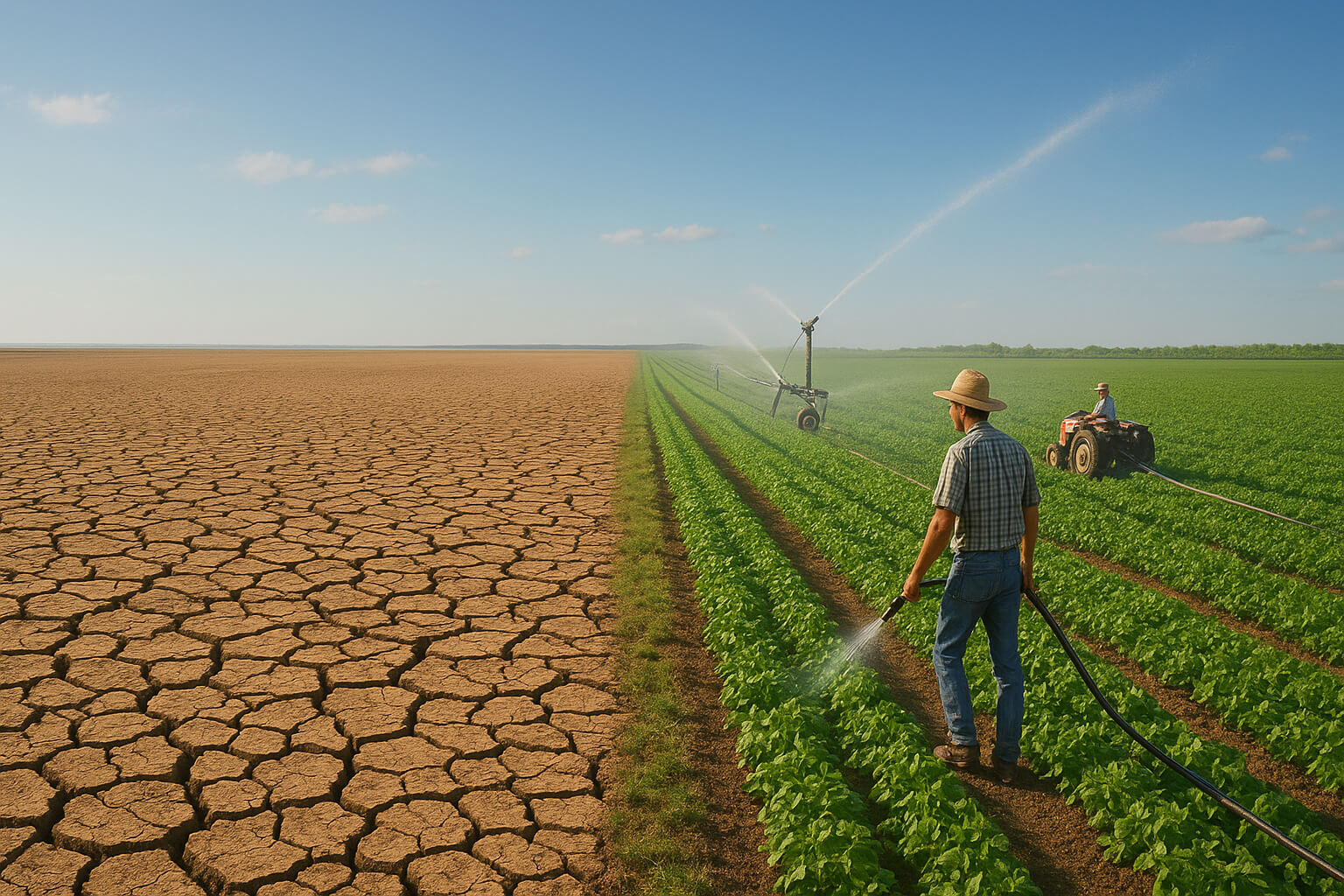August 22, 2025

Water is the foundation of life—essential for drinking, sanitation, agriculture, energy, and ecosystems. Yet, today, billions of people are grappling with the growing threat of water scarcity. According to the United Nations, over 2 billion people live in water-stressed regions, and this number is projected to soar as population growth, climate change, and unsustainable practices stretch already limited water supplies.
But this isn’t only a crisis for faraway places or future generations—it’s a global, present-day emergency that touches nearly every part of our lives. Water scarcity endangers food security, public health, economic stability, and peace. The good news? With the right tools, practices, and collective will, this crisis is solvable.
Agriculture uses nearly 70% of the world’s freshwater—making it the largest user of this critical resource. While food production is vital, traditional methods like flood irrigation and mono-cropping are often inefficient and unsustainable, leading to:
Crops such as rice, sugarcane, and cotton are especially water-intensive. In countries like India and China, where water tables are rapidly dropping, the overuse of water in farming has created long-term vulnerability.
But there’s a way forward. The emergence of sustainable agriculture offers hope by proving that we can feed the world without draining it.
Sustainable agriculture involves farming methods that conserve natural resources, reduce environmental impact, and maintain productivity. These include:
These practices don’t just reduce water consumption—they also improve soil health, promote biodiversity, and help smallholder farmers become more resilient to climate shocks.
As with digital tools in music production (guide to DAWs), agricultural technology is revolutionizing how we approach sustainability. The key is access, education, and scaling.
Advancements in agri-tech are unlocking powerful new ways to optimize water use:
In much the same way musicians use tools to maximize creativity and minimize waste (see warm-up strategies), farmers today can use digital solutions to grow more with less.
These aren’t just technical tweaks—they’re life-saving innovations, particularly in regions already facing climate extremes.
Water scarcity is a shared challenge, but the most effective solutions often begin locally—with communities adapting global strategies to fit their unique environments.
From solar-powered groundwater pumps in sub-Saharan Africa to rice-fish farming systems in Southeast Asia, small-scale changes can ripple outward—reshaping how water is valued and managed at every level.
Water scarcity isn’t just a rural or agricultural problem. It’s already reshaping global systems:
Every drop counts. Supporting water-efficient agriculture and sustainable food systems helps stabilize not only farms—but also cities, economies, and futures.
In the same way musicians rely on disciplined routines to strengthen their craft (see warm-up article), we must adopt daily, community-wide water stewardship habits. It’s not glamorous—but it’s essential.
Whether you’re a policymaker, consumer, student, or farmer, here’s how you can take action:
Water is more than a resource—it is the thread that connects health, equity, food, peace, and survival. The growing crisis of water scarcity threatens that connection, but it also provides an opportunity: to rethink how we grow our food, how we use technology, and how we collaborate across borders and cultures.
By investing in sustainable agriculture, embracing innovation, and making everyday choices with water in mind, we can rewrite this story. A water-secure future isn’t just possible—it’s necessary.
Stay up to date with the latest tips, expert insights, product reviews, and step-by-step guides to help you grow, create, and succeed—no matter your industry or passion.